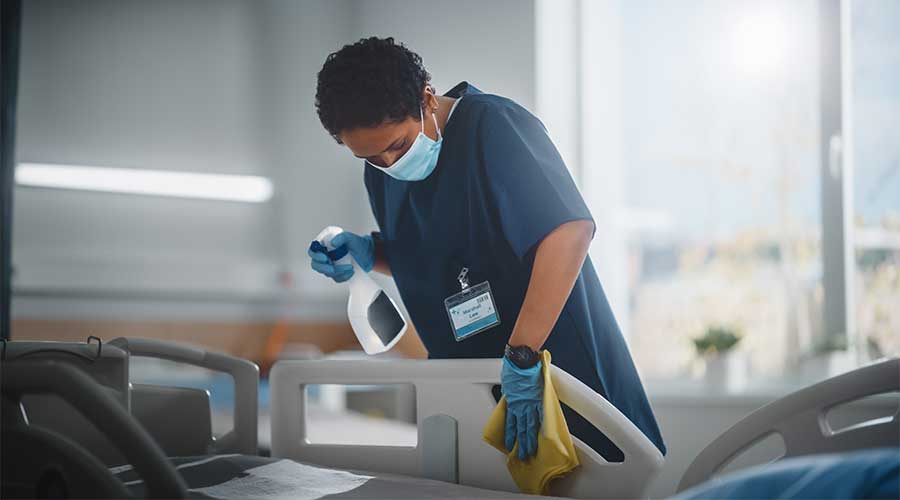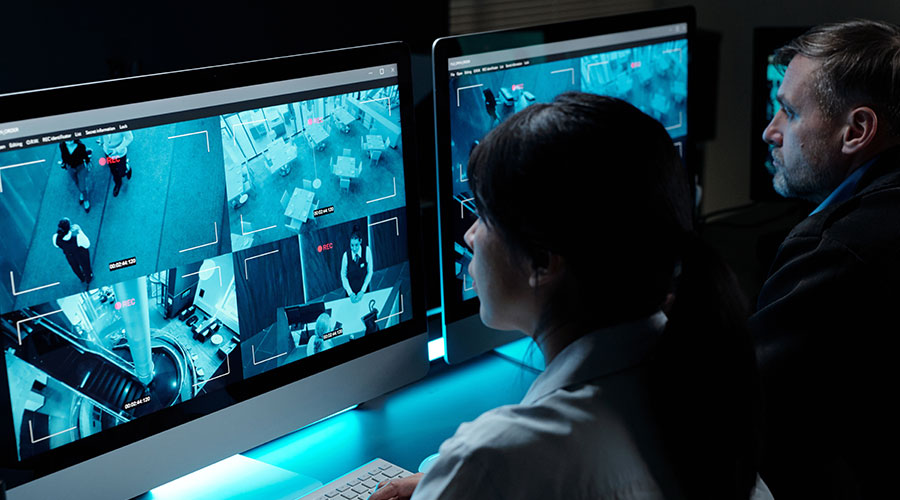Some chemical disinfectants are so harmful to environmental surfaces that damage might render items uncleanable and shorten their lifespan. As a result, replacement costs need to be added to the cost of disinfectant usage.
At a high level, surface disinfection compatibility tells environmental services managers if workers can use a specific disinfectant to disinfect a particular surface material. But in practice, disinfectants cause damage to many different types of surface materials, creating microbial reservoirs that harbor deadly microbes and making it difficult, if not impossible, to effectively disinfect the damaged surface again.
The Healthcare Surfaces Institute brings together global, multidisciplinary experts to focus on the threat damaged surfaces present patients and staff in healthcare environments. According to a case study on the institute’s website titled, “Surface disinfection incompatibility with medical devices creates potential patient risks,” a large Midwestern hospital with approximately 700 licensed beds and over 1.2 million patient encounters yearly, purchased several hundred state-of-the-art, non-invasive medical device monitoring systems. Within two years, there was visible damage to the monitoring systems due to chemical exposure during the disinfection process.
Challenges related to surface disinfection compatibility came to the forefront of the hospital’s awareness through the discovery and analysis of damage to the monitoring devices. This case study is an example of the way these challenges create risks to patient safety and present significant liability for the healthcare facility and the manufacturer when not addressed.
Related Content: How to Choose the Right Disinfectants
Due to the complexity of this problem, many facilities pay high costs for repair, replacement and ongoing maintenance, and in many cases the problem is virtually overlooked. In this case study, the two organizations worked together to address the gaps and problems that were identified.
The hospital then established a single point of contact between the medical device company and the hospital’s value analysis staff to facilitate more effective communication. For patient and healthcare worker safety, the hospital ultimately chose to continue using a disinfectant indicated in infection prevention and control guidelines that is not approved for use on the monitoring devices.
To address further damage caused by the disinfectant, the hospital and the medical device company collaborated to create and implement an ongoing service program to repair damaged monitor enclosures as necessary.
Healthcare facilities are focused on patient safety and mitigating the spread of microbes that cause deadly infections. A focus on effective cleaning and disinfection strategies can only be successful if surfaces and products are not damaged by the disinfectants that must be used to destroy specific microbes.
The problem has many aspects, beginning with the selection of surface materials being used in the design of medical devices and ending with testing an assembled product or environment that includes more than one surface material on any one product.
To reduce patient risk, the question that must be answered for every surface material present in a healthcare environment is, “Can this product be cleaned and disinfected with the standard disinfectants being used in this healthcare facility without damaging the surface materials?”
J. Darrel Hicks, BA, MESRE, CHESP, Certificate of Mastery in Infection Prevention, is the past president of the Healthcare Surfaces Institute. Hicks is a nationally recognized subject matter expert in infection prevention and control as it relates to cleaning. He is the owner and principal of Safe, Clean and Disinfected. His enterprise specializes in B2B consulting, webinar presentations, seminars and facility consulting services related to cleaning and disinfection. He can be reached at darrel@darrelhicks.com. Learn more at www.darrelhicks.com.

 How Healthcare Facilities Can Be Truly Disaster-Resilient
How Healthcare Facilities Can Be Truly Disaster-Resilient TriasMD Breaks Ground on DISC Surgery Center for San Fernando Valley
TriasMD Breaks Ground on DISC Surgery Center for San Fernando Valley Bigfork Valley Hospital Falls Victim to Data Breach
Bigfork Valley Hospital Falls Victim to Data Breach AI-Driven Facilities: Strategic Planning and Cost Management
AI-Driven Facilities: Strategic Planning and Cost Management  Double Homicide Suspect Hides from Police in Upstate Community Hospital
Double Homicide Suspect Hides from Police in Upstate Community Hospital